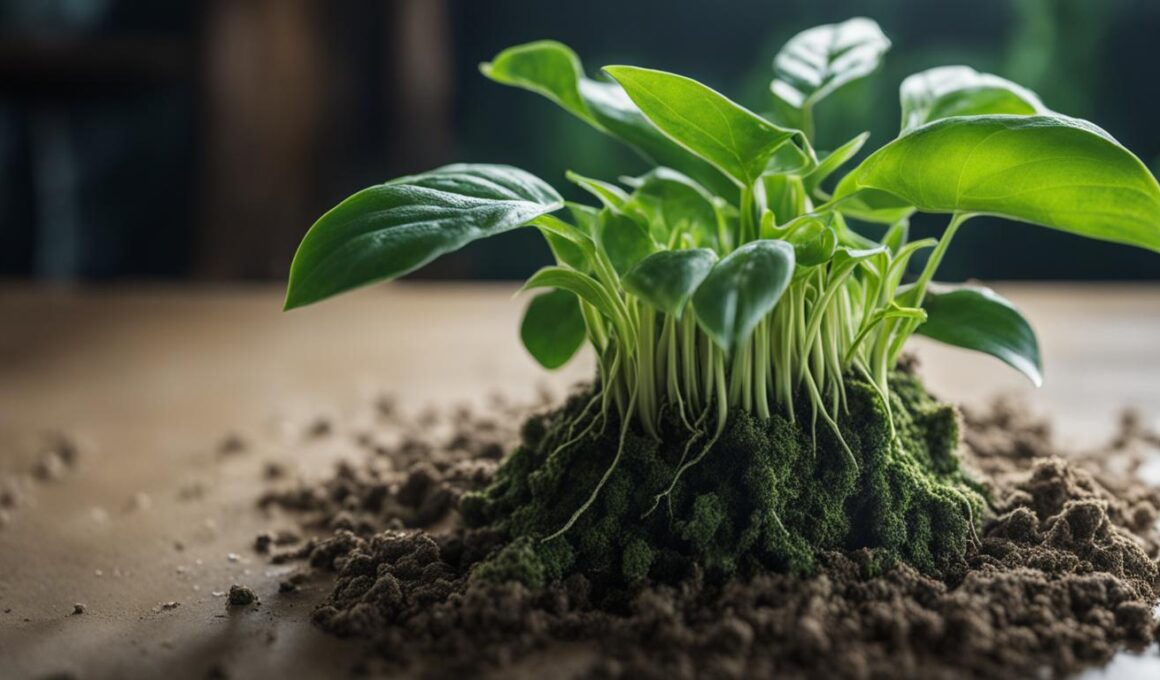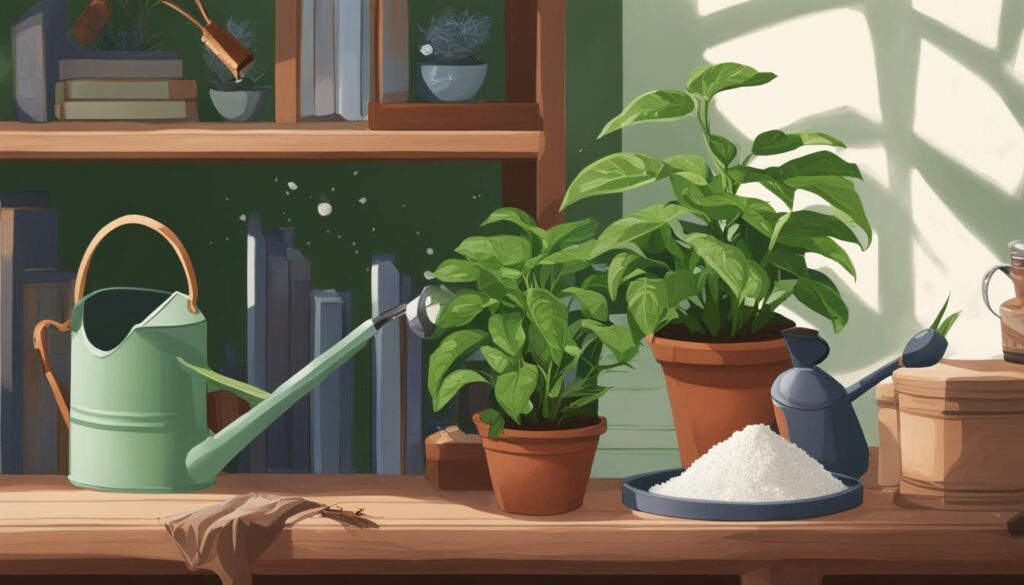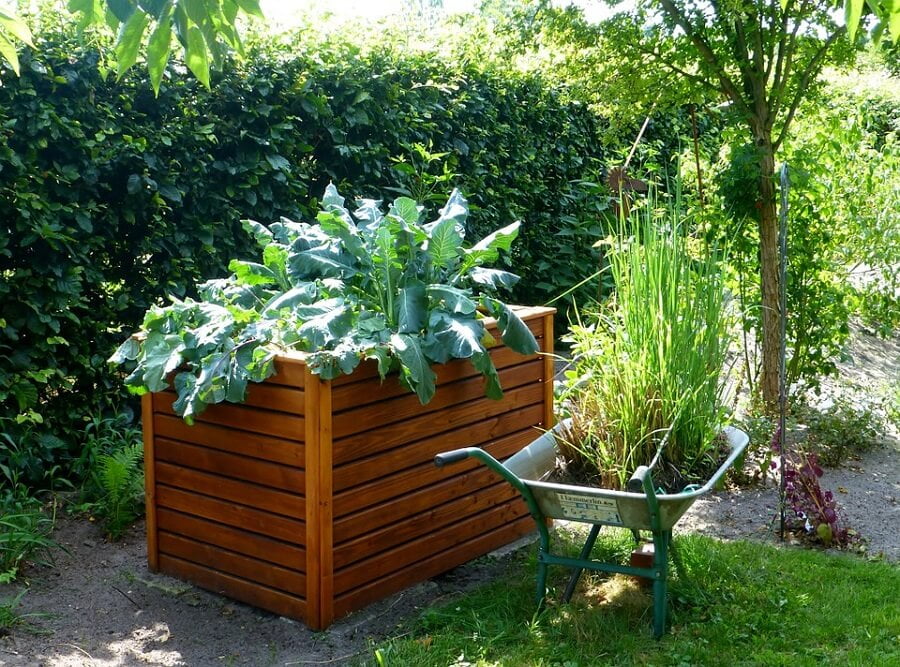If you’re a plant enthusiast, you’ve likely heard of diatomaceous earth. This natural substance made from fossilized remains of diatoms, a type of algae, has gained popularity as a pesticide and soil amendment for houseplants. But before you jump on the diatomaceous earth bandwagon, it’s important to understand the pros and cons of using it on your beloved indoor greenery.
Post Summary:- Diatomaceous earth is a natural substance made from fossilized remains of diatoms.
- It can be used as a pesticide and soil amendment for houseplants.
- The pros include effective pest control, affordability, and mold/mildew prevention.
- The cons include inhalation risks, clumping when wet, and potential harm to beneficial insects.
- Alternatives to diatomaceous earth include rubbing alcohol, insecticidal soap, and neem oil.
What Is Diatomaceous Earth?
Diatomaceous earth is a natural substance that is derived from the fossilized remains of diatoms, a type of algae. It is commonly used as a natural pesticide and soil amendment for houseplants. This powdery substance works by piercing the exoskeletons of insects, causing them to dehydrate and die. Additionally, diatomaceous earth can be used to improve soil drainage and aeration, making it a versatile option for plant care.
When using diatomaceous earth on houseplants, it is important to choose a high-quality product that is specifically labeled for this purpose. Look for food-grade diatomaceous earth, which is safe for use around children and pets. It is also essential to follow the instructions provided by the manufacturer for application and dosage.
Diatomaceous earth is a natural alternative to chemical pesticides and can be an effective tool in controlling pests on houseplants. Its natural composition makes it environmentally friendly, and its affordability makes it a popular choice for many plant enthusiasts. However, it is important to consider both the pros and cons of using diatomaceous earth and to explore alternative options depending on your specific needs.
| Pros of Diatomaceous Earth | Cons of Diatomaceous Earth |
|---|---|
| Effective natural pesticide | Potential inhalation hazard |
| Improves soil drainage and aeration | Clumps when exposed to water |
| Affordable option | Potential plant burn if used excessively |
| Helps with mold and mildew issues | Harmful to beneficial insects if used excessively |
| Doubles as a natural fertilizer |
Pros of Using Diatomaceous Earth on Houseplants
When it comes to taking care of your houseplants, diatomaceous earth can be a valuable ally. Here are some of the pros of using diatomaceous earth on your houseplants:
- Pest control: Diatomaceous earth is highly effective in controlling pests on your houseplants. Its powdery texture acts as a natural pesticide, piercing the exoskeletons of insects and causing them to dehydrate and die.
- Natural and safe: Diatomaceous earth is a natural product made from fossilized remains of diatoms. It is non-toxic to humans and pets, making it a safe option for pest control.
- Affordable: Diatomaceous earth is an affordable solution for managing pests on your houseplants. A small amount goes a long way, making it a cost-effective choice.
- Mold and mildew control: Diatomaceous earth can also help with mold and mildew issues. Its absorbent properties can help reduce excess moisture and inhibit the growth of mold and mildew on your plants.
- Natural fertilizer: In addition to its pest control benefits, diatomaceous earth also acts as a fertilizer for your houseplants. It provides minerals that can improve the health and growth of your plants.
Overall, using diatomaceous earth on your houseplants offers several advantages. It is an effective, natural, and affordable solution for pest control, while also providing additional benefits for the health and well-being of your plants.
Quote:
“I’ve been using diatomaceous earth on my houseplants for years, and it has made a noticeable difference in keeping pests at bay. It’s a reliable and cost-effective solution that I highly recommend.” – Janet, plant enthusiast
Cons of Using Diatomaceous Earth on Houseplants
While diatomaceous earth has several benefits for houseplants, it is important to consider the potential drawbacks before using it. Here are some cons to be aware of:
- Inhalation: One of the main concerns with diatomaceous earth is the risk of inhalation. The powder is fine and can become airborne, which may cause respiratory irritation if breathed in. It is recommended to wear a mask and apply the diatomaceous earth in a well-ventilated area to minimize this risk.
- Clumping: Another drawback is that diatomaceous earth can clump up when it comes into contact with water. This can make it less effective as a pest control method and may also result in difficulties when applying it evenly to the plants.
- Plant burn: Using too much diatomaceous earth on houseplants can potentially lead to plant burn. The abrasive nature of the powder can cause damage to the leaves and stems if applied in excessive amounts. It is important to follow the recommended guidelines for application and avoid overusing it.
- Harmful to beneficial insects: While diatomaceous earth is effective in controlling pests, it can also harm beneficial insects such as bees and ladybugs if used excessively. These insects play a crucial role in pollination and natural pest control, so it is important to consider the potential impact on the overall ecosystem when using diatomaceous earth.
It is essential to weigh the pros and cons of using diatomaceous earth on houseplants and make an informed decision based on your specific needs and circumstances. By understanding the potential drawbacks, you can take appropriate precautions and explore alternative options if necessary.
Cons of Using Diatomaceous Earth on Houseplants.
In summary:
| Cons | Description |
|---|---|
| Inhalation | Risk of respiratory irritation when inhaled |
| Clumping | May clump up when exposed to water, reducing effectiveness and even application |
| Plant burn | Excessive use can lead to damage to plant leaves and stems |
| Harmful to beneficial insects | Excessive use can harm beneficial insects, impacting the ecosystem |
It is important to be cautious when using diatomaceous earth and take necessary precautions to minimize the risks associated with its use. Understanding the potential cons allows you to make an informed decision and find the best approach for maintaining healthy houseplants.
Applying Diatomaceous Earth to Houseplants
When it comes to applying diatomaceous earth to your houseplants, there are a couple of methods you can choose from. The first method is dusting, where you simply sprinkle a small amount of the powder onto the leaves of the plants. This allows the diatomaceous earth to come in direct contact with any insects that may be present. Be sure to target the insects directly and avoid applying excessive amounts that can damage the leaves.
An alternative method is to mix diatomaceous earth with water in a spray bottle and apply it as a mist. This can be particularly useful if you have larger plants or if dusting is not practical. The mist will cover the plants and provide a barrier against pests. Again, it is important to target the insects directly and use the mist sparingly to avoid over-saturation.
Application Methods for Diatomaceous Earth on Houseplants
| Method | Description |
|---|---|
| Dusting | Small amount of diatomaceous earth powder is sprinkled onto the leaves of the plants |
| Spray Bottle | Diatomaceous earth is mixed with water and applied as a mist using a spray bottle |
Regardless of the method you choose, it is important to remember that diatomaceous earth works best when it comes in direct contact with insects. So be sure to apply it to areas where pests are likely to be present, such as the undersides of leaves or around the base of the plants. And always follow the instructions on the packaging for the recommended dosage and frequency of application.
Now that you know how to apply diatomaceous earth to your houseplants, you can confidently use it as a natural and effective pest control method. Just remember to handle it with care and avoid excessive use to protect both your plants and the environment.
Using Diatomaceous Earth on Potted Plants
If you have potted plants and want to use diatomaceous earth as a natural pesticide and soil amendment, here are some guidelines to follow. First and foremost, make sure to use food-grade diatomaceous earth, as it is safe for plants and animals. Before applying it, ensure that the potting soil is damp but not saturated. This will help the diatomaceous earth adhere to the soil and make it more effective in controlling pests.
When applying diatomaceous earth to potted plants, it is important to use only a thin layer. Sprinkle a small amount of diatomaceous earth on the surface of the soil, making sure to cover the entire area. Avoid placing it directly on the plant leaves, as it can cause damage. By applying a thin layer, you will provide a barrier that will help deter pests without suffocating the roots or affecting the plant’s health.
To ensure proper application, it is recommended to reapply diatomaceous earth after heavy rainfall or watering. This will ensure that the protective layer is maintained and pests are kept at bay. Remember to always follow the instructions on the packaging and avoid using excessive amounts of diatomaceous earth, as it can lead to clumping and potential harm to the plant. With proper application and regular maintenance, diatomaceous earth can be an effective tool in keeping your potted plants healthy and pest-free.
Benefits of Using Diatomaceous Earth on Potted Plants
- Effective natural pesticide
- Promotes healthy root development
- Improves soil drainage and aeration
- Safe for plants and animals when using food-grade diatomaceous earth
Considerations When Using Diatomaceous Earth on Potted Plants
- Use a thin layer to avoid suffocating the roots
- Apply after watering or rainfall to maintain effectiveness
- Do not sprinkle directly on plant leaves to prevent damage
- Follow package instructions and avoid excessive application
| Pros of Using Diatomaceous Earth | Cons of Using Diatomaceous Earth |
|---|---|
| – Effective pest control | – Potential harm to beneficial insects |
| – Natural and affordable option | – Inhalation risk if not used with caution |
| – Helps with mold and mildew issues | – Clumping when exposed to water |
| – Can be used as a fertilizer for plants | – Excessive use can potentially burn plants |
Alternatives to Using Diatomaceous Earth
If diatomaceous earth is not available or preferred for controlling pests on your houseplants, there are alternative options to consider. These alternatives can be just as effective in eliminating pests and keeping your plants healthy. Here are three alternatives to using diatomaceous earth:
Rubbing Alcohol
Rubbing alcohol is an effective alternative to diatomaceous earth for killing pests on contact. Simply mix equal parts rubbing alcohol and water in a spray bottle and apply it directly to the affected areas of your plants. Rubbing alcohol works by dehydrating and suffocating pests, effectively eliminating them. This method is particularly useful for small or hard-to-reach pests such as aphids or spider mites. However, it’s important to test the rubbing alcohol solution on a small section of your plant first to ensure it does not cause any damage.
Insecticidal Soap
Insecticidal soap is another great alternative for controlling pests on houseplants. It is a specially formulated soap that is designed to kill insects while being gentle on plants. To use insecticidal soap, dilute it according to the instructions on the packaging and spray it directly onto the leaves and stems of your plants. The soap works by suffocating pests and disrupting their cell membranes. Insecticidal soap is effective against a wide range of pests, including aphids, mealybugs, and whiteflies. However, it’s important to avoid using insecticidal soap on plants that are sensitive to soap or have delicate foliage.
Neem Oil
Neem oil is a natural pesticide derived from the neem tree and is an effective alternative to diatomaceous earth. It can disrupt the life cycle of pests, preventing them from feeding and reproducing. To use neem oil, dilute it according to the instructions on the packaging and spray it onto your plants. Neem oil is effective against a variety of pests, including aphids, caterpillars, and scale insects. It also has the added benefit of acting as a fungicide, helping to prevent fungal diseases in your plants. However, it’s important to note that neem oil has a strong odor and may not be suitable for all plants, so be sure to test it on a small section of your plant before applying it more broadly.

What are the Pros and Cons of Using Diatomaceous Earth for Cleaning Your Backyard?
Using diatomaceous earth for cleaning your outdoor space has its pros and cons. On the positive side, diatomaceous earth is a natural, non-toxic option that effectively kills pests like ants, fleas, and ticks. It also has absorbent properties, which can help with cleaning up spills or eliminating odors. However, this fine powder can be easily airborne, leading to respiratory irritation. Additionally, it may harm beneficial insects and worms if used excessively, disrupting the ecosystem balance in your backyard.
Conclusion
In conclusion, diatomaceous earth can be a valuable tool for controlling pests and improving soil quality when used correctly on houseplants. It offers several advantages, such as being a natural and affordable option for pest control. Its ability to address mold and mildew issues and serve as a fertilizer further enhances its appeal.
However, it is important to weigh the pros and cons before using diatomaceous earth on your houseplants. While it is effective against pests, precautions should be taken to avoid inhaling it during application. Clumping and potential plant burn are also considerations, so it is crucial to use the correct amount. Additionally, diatomaceous earth can harm beneficial insects if used excessively.
If diatomaceous earth is not available or you prefer alternatives, there are other options for pest control on houseplants. Rubbing alcohol can quickly kill pests on contact, insecticidal soap can be sprayed on the plants, and neem oil can disrupt the life cycle of pests. Each alternative has its own set of instructions and considerations, enabling you to find the best solution for your specific needs.
Overall, diatomaceous earth can be a valuable addition to your houseplant care routine, offering pest control and soil amendment benefits. Just remember to weigh the pros and cons, and explore alternative options depending on the specific needs of your plants.
FAQ
What is diatomaceous earth?
Diatomaceous earth is a powdery substance made from the fossilized remains of diatoms, a type of algae. It acts as a natural pesticide and soil amendment for houseplants.
What are the benefits of using diatomaceous earth on houseplants?
Using diatomaceous earth on houseplants can effectively control pests, provide a natural composition, and be an affordable option. It can also help with mold and mildew issues and serve as a fertilizer for plants.
Are there any drawbacks to using diatomaceous earth on houseplants?
Yes, there are a few drawbacks to consider. Diatomaceous earth can be harmful if inhaled, clump up when exposed to water, and potentially burn plants if used excessively. It can also harm beneficial insects if used excessively.
How do you apply diatomaceous earth to houseplants?
Diatomaceous earth can be applied to houseplants by dusting the leaves with a small amount of the powder or by mixing it with water in a spray bottle and applying it as a mist. It is important to target the insects directly and avoid using excessive amounts.
Can diatomaceous earth be used on potted plants?
Yes, diatomaceous earth can be used on potted plants. It is important to use food-grade diatomaceous earth and ensure that the potting soil is damp before applying it. Only a thin layer of diatomaceous earth is necessary, covering the surface of the soil.
What are some alternatives to using diatomaceous earth on houseplants?
If diatomaceous earth is not available or preferred, you can use rubbing alcohol to kill pests on contact, insecticidal soap to spray on the plants, or neem oil to disrupt the life cycle of pests. Each alternative has its own instructions and considerations.
What is the conclusion on using diatomaceous earth for houseplants?
Diatomaceous earth can be a beneficial tool for pest control and soil improvement when used properly on houseplants. It offers the advantage of being a natural and affordable option. However, it is important to consider the potential drawbacks and explore alternative options depending on the specific needs of your plants.









